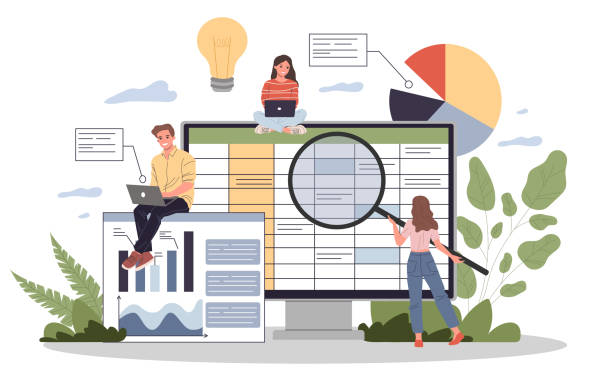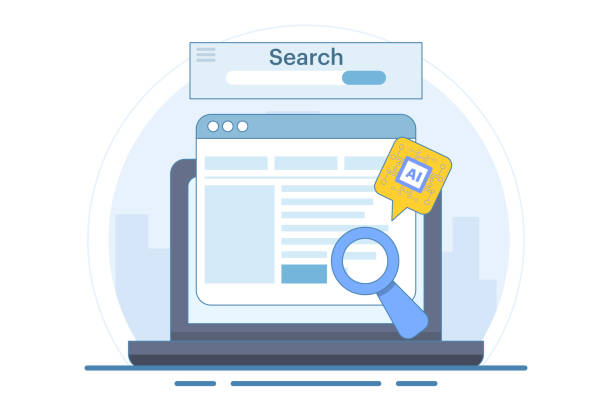Comprehensive Introduction to Multilingual Website Design and its Importance

In today’s world, where geographical boundaries hold no meaning in cyberspace, multilingual website design has become a #key and #essential tool for businesses and organizations aiming to expand their #international_presence.
This approach goes beyond mere text translation, encompassing full adaptation of content, culture, and user experience to the needs of global audiences.
The main goal of a multilingual website is to allow users from anywhere in the world to receive information in their native language, which in turn increases trust, engagement, and ultimately, business success.
To gain a deeper understanding of this concept, it’s important to note that users prefer to interact with content presented in their own language, even if they are familiar with the website’s original language.
This highlights the high importance of multilingual website design in modern digital marketing strategies.
Creating a website with support for multiple languages not only helps you reach new markets but also strengthens your brand globally.
This is a comprehensive and educational explanation of the foundations of this field, paving the way for entry into the more complex world of multilingual design.
Choosing the right languages and translation approach are the most basic yet crucial decisions in this path.
For this reason, a correct understanding of target audience needs is of particular importance before any technical action.
Are you tired of losing business opportunities due to not having a professional corporate website?
Rasaweb, with its professional corporate website design, helps you:
✅ Build a powerful and reliable image for your brand
✅ Convert website visitors into loyal customers
⚡ Get a free consultation now!
Numerous Advantages of Multilingual Websites in Market Expansion

Multilingual websites offer immense potential for expanding business horizons and reaching new audiences worldwide.
One of the most significant advantages of multilingual website design is a substantial increase in Search Engine Optimization (SEO).
By providing content in various languages, you can rank for different keywords in local search engines and attract more organic traffic.
This means a stronger presence in international search results and attracting customers who might never have accessed your single-language website.
In addition to SEO benefits, multilingual websites significantly improve user experience.
When users can read information in their native language, they feel more comfortable and trusting, which leads to higher conversion rates and increased time spent on the site.
This is an in-depth analysis of the positive impacts of such an approach.
Furthermore, the ability to communicate with potential customers in their language builds stronger relationships and greater brand loyalty.
Ultimately, multilingual website design allows you to be a pioneer in new markets that your competitors may not have entered yet.
This is a powerful competitive advantage that can make the difference between limited growth and unlimited expansion.
This strategy is highly beneficial not only for large corporations but also for small and medium-sized businesses seeking growth and development, paving the way for globalization.
Strategic Steps in Planning a Multilingual Website

Meticulous planning is the cornerstone of success in multilingual website design.
Before any technical action, a comprehensive strategy must be developed, comprising several key stages.
First, identifying target markets and their respective languages is of paramount importance.
You need to research which languages hold the most potential for your business and which geographical regions you are targeting.
This is a specialized part of the process that requires market data and demographic analysis.
Second, the content translation approach must be determined.
Will you use machine translation, which is fast but less accurate, or opt for human translation, which is more expensive but higher quality? In many cases, a combination of both approaches yields the best results.
For instance, human translation for core and strategic content, and machine translation for less critical or internal content.
Third, you must consider content management.
Choosing a Content Management System (CMS) that supports robust multilingual capabilities is crucial.
This system should allow for easy organization and updating of content across different languages.
These steps are practical guidance for getting started.
The table below shows different translation approaches:
| Translation Method | Advantages | Disadvantages | Use Cases |
|---|---|---|---|
| Human Translation | High accuracy, natural and culturally appropriate content | High cost, time-consuming | Marketing, legal, critical content |
| Machine Translation (with editing) | High speed, lower cost than human | Needs editing, potential for errors | General content, basic support |
| Raw Machine Translation | Very fast, free or low-cost | Very low accuracy, unnatural | Internal use, general understanding |
This meticulous planning ensures that your multilingual site development project is built on solid foundations and follows the correct path from the outset.
Overlooking any of these steps can lead to serious challenges in the future.
Technical Aspects of Multilingual Website Design Implementation
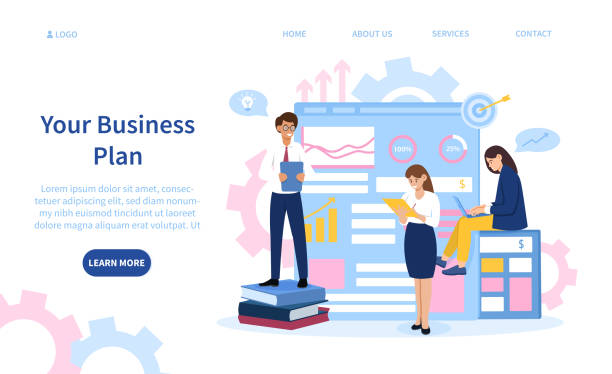
The technical implementation of multilingual website design involves crucial details that directly impact site performance and SEO.
The first point is URL structure.
Choosing between subdomains (e.g., fr.example.com), subdirectories (e.g., example.com/fr), and country-code top-level domains (ccTLDs) (e.g., example.fr) depends on the overall strategy and international SEO goals.
Each has its advantages and disadvantages; subdirectories are often simpler for SEO and easier to manage.
The second vital aspect is the use of the hreflang tag.
These tags tell search engines that different versions of a page exist for various languages or regions, helping them display the correct version to users in search results.
Correct hreflang implementation requires specialized knowledge, and common errors can lead to SEO issues.
Third, selecting and configuring the Content Management System (CMS) is important.
Many modern CMSs like WordPress with multilingual plugins (such as WPML) or Joomla with built-in features, make the task of building a multilingual site easier.
It must be ensured that the chosen CMS correctly generates hreflang tags, provides language switching functionality, and supports optimized URLs for each language.
Finally, site loading speed in different regions of the world must also be considered; using a CDN (Content Delivery Network) can help improve site performance for users worldwide.
These technical aspects provide the necessary infrastructure for an efficient and searchable international website.
Losing potential customers due to an unprofessional website? Rasaweb is your answer! With our specialized corporate website design services, you can:
✅ Enhance your business’s credibility and standing
✅ Experience attracting more targeted customers
⚡ Act now to get a free consultation!
Efficient Content Management and Translation Process

Content management in a multilingual website design not only involves text translation but also encompasses full localization of content for each target market.
Localization goes beyond word-for-word translation and includes adapting terminology, units of measurement, dates, currencies, images, and even colors to the specific culture and customs of the region.
This is an important educational process.
For example, an image that has a positive meaning in one culture might cause misunderstanding in another.
Establishing an efficient translation workflow is essential for managing a large volume of content in different languages.
This workflow should include clear stages from content creation, submission for translation, review and editing by native translators, and publication.
Using Computer-Assisted Translation (CAT tools) and Translation Memory can help maintain terminology consistency, increase translation speed, and reduce long-term costs.
These tools prevent re-translation of recurring sentences and phrases by storing previous translations.
Furthermore, quality control of translations is of high importance.
Translators must not only be fluent in the target language but also have a complete understanding of the relevant culture and industry.
Poorly or incorrectly translated content can severely damage your brand’s reputation.
A precise content strategy for each language must be developed to ensure your message is accurately and effectively conveyed to audiences of each language.
This also includes optimizing keywords for each language separately.
The success of a multilingual site heavily depends on the quality and effective management of its content.
User Experience (UX) in International Website Design

User Experience (UX) in multilingual website design is a critical factor that determines the success or failure of your website.
Users should be able to easily and quickly find and select their preferred language.
Placing a language switcher in an accessible and clear location, such as the header or footer, is of high importance.
This switcher should be accompanied by standard icons (like flags or language codes) to be universally understood.
In addition to the switcher, automatic language detection based on geographical location or browser settings can improve the initial experience, but there should always be an option to change the language manually.
This is a key guideline.
User Interface (UI) localization is also an important part of UX.
This includes adapting text direction (right-to-left for Persian or Arabic, left-to-right for English), formatting numbers and dates, and even symbols and icons.
What is accepted in one culture may not be in another; for example, colors have different meanings in various cultures.
This is a deep explanation of the cultural aspects of UX.
Typography and fonts must also be optimized for each language to ensure content readability.
Ensure that your chosen fonts support characters and glyphs of all target languages.
Also, it should be considered that visual design and page layout may require adjustments for different languages to accommodate longer or shorter texts.
Responsive design and compatibility with various devices are also crucial for international users.
Finally, customer support and contact forms should also be available in multiple languages to provide a complete user experience.
The ultimate goal of multilingual website design is to provide a seamless and comfortable experience for all users, regardless of their language or geographical location.
Search Engine Optimization (SEO) for Multilingual Websites
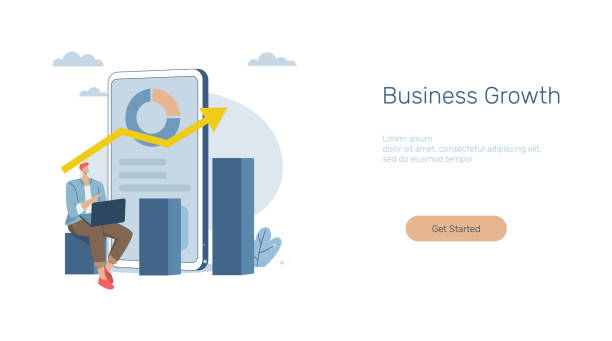
Search Engine Optimization (SEO) for a multilingual website has its own complexities, but if implemented correctly, it can yield significant results in attracting global traffic.
First, keyword research must be conducted separately for each language and region.
Keywords that are successful in one language do not necessarily have a direct equivalent in another and may require localization and finding phrases with high search volume and appropriate competition in each market.
This is an analytical and specialized part.
Second, the correct use of HTML hreflang tags is crucial for guiding search engines to the correct language version of your pages.
These tags prevent duplicate content issues and ensure that users are directed to the page relevant to their language and geographical location.
Third, content optimization for each language must be done considering cultural and linguistic differences.
This includes titles, meta descriptions, and main content.
Fourth, internal and external link building must also be carried out carefully.
Links from local and reputable websites in each country can help increase your website’s authority in that region.
Fifth, site loading speed is very important for users worldwide.
Using a CDN (Content Delivery Network) can help improve this factor.
Finally, continuous monitoring of SEO performance using tools like Google Search Console and Google Analytics for each language version is essential to identify issues and discover opportunities for improvement.
These actions are the cornerstone of a successful multilingual website design from an SEO perspective.
| Multilingual SEO Factor | Importance | Key Points |
|---|---|---|
| URL Structure | High | Subdomain, subdirectory, or dedicated TLD |
| Hreflang Tag | Very High | Ensuring correct and reciprocal links |
| Local Keyword Research | High | Using native translators and local tools |
| Content and Meta Tag Optimization | High | Full localization of title, descriptions, and main text |
| Local Link Building | Medium to High | Obtaining backlinks from reputable sites in each country |
Common Challenges and Solutions in Multilingual Websites

Although multilingual website design offers numerous benefits, it also comes with challenges that are crucial to acknowledge and prepare for.
One of the most important common questions and problems is translation quality.
Machine or unprofessional translations can damage website credibility and inaccurately convey the main message.
The solution is to always use native and specialized translators in the relevant field and apply a thorough review process for all content.
Another challenge is managing and maintaining a large volume of content in multiple languages.
This can be time-consuming and complex.
Using a powerful CMS with built-in multilingual capabilities and automating translation and publication processes can reduce this burden.
Technical issues related to international SEO, such as incorrect hreflang tag implementation or inappropriate URL structure, are also common obstacles.
These challenges require specialized knowledge and continuous monitoring through webmaster tools.
Cultural resistance or a lack of understanding of subtle cultural differences in design and content can lead to rejection by local audiences.
Localization goes beyond mere translation, encompassing a deep understanding of the norms, interests, and cultural sensitivities of each region.
Also, simultaneous updating of content across all languages can be difficult; a comprehensive and scheduled content publication strategy is essential to ensure freshness and consistency of content across all versions.
With careful planning, the use of appropriate technologies, and collaboration with local experts, most of these challenges can be overcome to achieve a successful multilingual website.
Are you losing business opportunities because of an outdated website? With Rasaweb, solve the problem of not attracting potential customers through your website forever!
✅ Attract more high-quality leads
✅ Increase brand credibility in the eyes of customers
⚡ Get a free corporate website design consultation
Measuring Success and Future Outlook of Multilingual Websites

After implementing and launching a multilingual website, measuring its success is of paramount importance.
Using data analysis tools like Google Analytics is essential for tracking the performance of each language version.
Metrics such as organic traffic from each country/language, conversion rate, time spent on site, and bounce rate can indicate success or areas for improvement.
A/B testing for different content and design versions in various languages can help identify the best approaches.
This is an informative and engaging aspect of the web world, as there are always new things to learn and optimize.
The future outlook for multilingual website design is also very bright and full of innovation.
Advancements in Artificial Intelligence (AI) and Natural Language Processing (NLP) are revolutionizing machine translation processes, making them increasingly accurate and natural.
This can help reduce the costs and time required for large-scale content translation.
Furthermore, voice search and smart assistants are becoming common methods for interacting with the web, which in turn requires attention to localizing voice responses and conversational search queries.
Virtual Reality (VR) and Augmented Reality (AR) can also create new ways to deliver multilingual content and more immersive user experiences.
Therefore, for long-term success in this field, businesses must always stay updated on the latest technologies and trends and be ready to adapt their strategies.
This path is a continuous journey of learning and optimization, where your multilingual site must constantly evolve.
Conclusion and Final Recommendations for Successful Multilingual Website Design
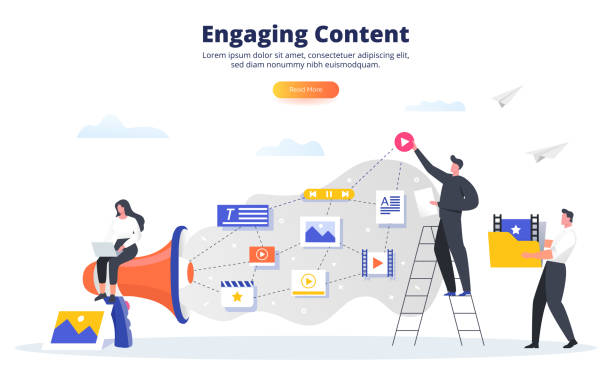
In this article, we explored various aspects of multilingual website design.
From its strategic importance and countless benefits in expanding global reach to the technical details of implementation, content management, the significance of user experience, and search engine optimization, all aspects were analyzed.
As we’ve seen, success in creating a multilingual website is not limited to text translation but includes full content localization, cultural adaptation, and attention to technical and SEO nuances.
It is recommended that before starting any multilingual website design project, a comprehensive and detailed planning be carried out, including market research, selection of target languages, and determination of translation strategy.
Investing in high-quality translation by native translators and using a robust and suitable Content Management System are key success factors.
Furthermore, the importance of localized user experience and correct implementation of hreflang tags for international SEO should not be overlooked.
Continuous monitoring of site performance through data analysis tools and readiness to adapt to the latest trends and technologies are crucial for maintaining competitive advantage.
This comprehensive training and guidance outlines a clear path for you to confidently embark on the journey of multilingual website design and achieve your global goals.
By adhering to these principles, your site will not only become a powerful communication tool but also a launching pad for the growth and development of your business in international markets.
Building an international website is a smart investment for the future.
Frequently Asked Questions
| Question | Answer |
|---|---|
| What is multilingual website design? | It is the design of a website whose content is available to users in several different languages, allowing users to choose their preferred language. |
| Why is a multilingual site important? | To reach international audiences, increase website traffic, improve user experience for non-Persian speaking visitors, and expand business in global markets. |
| What are the advantages of having a multilingual site? | Increased international SEO, attracting new customers from different countries, enhancing business credibility and professionalism, and reducing bounce rate by providing understandable content. |
| What are the methods for implementing a multilingual site? | Using subdirectories (e.g., example.com/en/), subdomains (e.g., en.example.com), or separate top-level domains for each language (e.g., example.com and example.de). |
| Which URL structure is best for international SEO? | Subdirectories (e.g., example.com/en/) are often preferred for SEO due to the consolidation of main domain authority, although each method has its advantages and disadvantages. |
| How does a multilingual site affect SEO? | By providing content in different languages, the site appears in local search results for those languages, click-through rates and traffic increase, and the overall domain authority of the site improves. Correct use of hreflang tags is crucial. |
| How is content translation managed? | Professional translators, machine translation tools (with human editing), or Content Management Systems (CMS) with built-in multilingual capabilities or relevant plugins can be used. |
| What are the common challenges in multilingual website design? | Managing translated content, maintaining design consistency across different languages, compatibility with Right-to-Left (RTL) languages like Persian and Arabic, optimizing SEO for each language, and choosing an appropriate URL structure. |
| How do I manage text direction (LTR/RTL) in a multilingual site? | For Right-to-Left languages (like Persian), you need to apply specific CSS styles to change text direction, element layout, and table direction. This is often done using the `direction: rtl;` property and other related settings. |
| How can users change the site language? | Usually by using a button, a dropdown menu, or a language selection widget clearly placed in the site’s header or footer. Automatic detection of the user’s browser language and offering a language change is also common. |
And other advertising services by Rasaweb Advertising Agency:
Smart Sales Automation: A combination of creativity and technology for campaign management through attractive UI design.
Smart Website Development: A fast and efficient solution for increasing sales with a focus on custom programming.
Smart Direct Marketing: An innovative service for increasing online growth through marketing automation.
Smart Advertorials: A fast and efficient solution for campaign management with a focus on custom programming.
Smart Link Building: Professional optimization for customer acquisition using key page optimization.
And over a hundred other services in the field of internet advertising, advertising consultation, and organizational solutions.
Internet Advertising | Advertising Strategy | Advertorials
Sources
- Advantages of Multilingual Website Design
- SEO Optimization for Multilingual Websites
- Important Tips in International Website Development
- Increasing Sales with Multilingual Website
? Are you ready to revolutionize your business in the digital world? Rasaweb Afarin, your expert partner in digital marketing agency, accompanies you on the path to growth and visibility by offering innovative and effective solutions including multilingual website design, SEO, and advertising campaign management.
📍 Tehran, Mirdamad Street, next to Bank Markazi, Kazeroun Jonoubi Alley, Ramin Alley, No. 6

